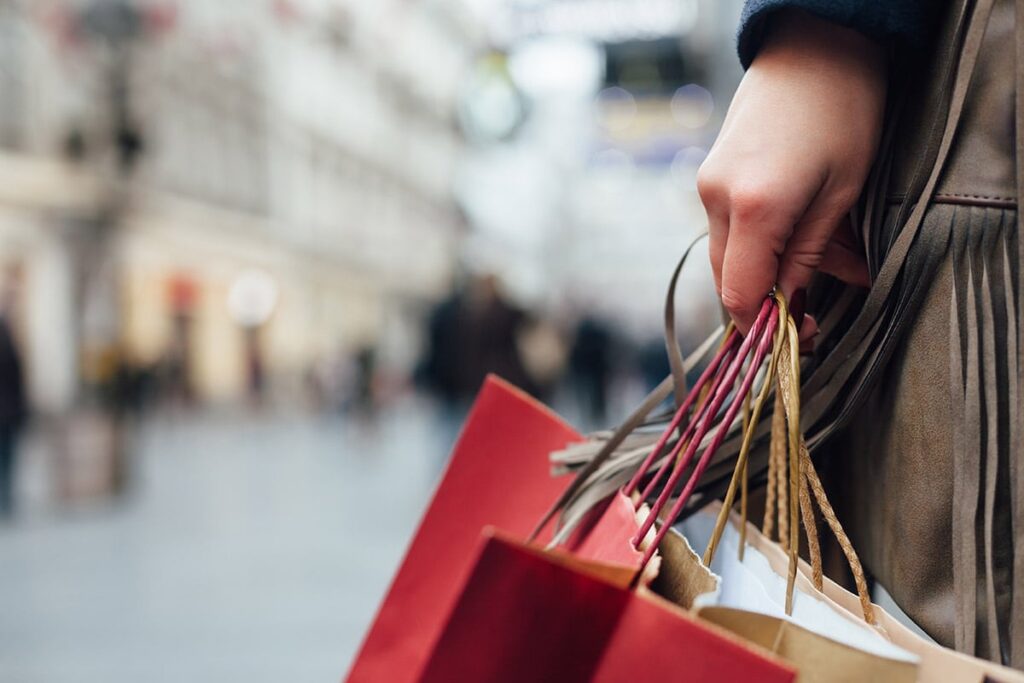How to increase sales in retail: 5 effective strategies
Loyalty is a vital driver of sales as it allows brands to stay top-of-mind during the consumer’s purchase journey. When the consumer is in the shopping aisle, they see thousands of brands and an equal amount of advertising. Most times, the CPG brand’s product is sitting on the shelf right next to its largest—and sometimes less costly—competitors. Brands must establish relationships with consumers before they even enter the store to stand out in such a crowded marketing space. They must also find ways to connect with consumers as they travel in efforts to reach them in the critical moments before purchase. Through such strategies, it’s much easier to increase sales in retail and gain a greater share of the market.
Increase Focus on Brand Safety
A major concern which does not get enough attention in the CPG industry is brand safety. Brand safety doesn’t relate to the safety of the products themselves. Instead, it centers on the safety of the platforms and marketing methods they use. When a brand directs consumers to an unsafe platform, they could suffer serious damage to their reputation. In 2018, 60% of marketing professionals reported that brand safety was a significant concern, and this is a problem which only grows more prevalent as new platforms roll out. There are a few issues that those thinking of brand safety need to consider:
Information reliability:
Sites which post false information and made up news stories are a serious problem as they mislead the public and spread misinformation. Brands should avoid such sites if they want to retain consumer trust.
Data collection practices:
All sites should have transparent and open data collection policies to ensure consumer privacy protection. Brands should only work with sites that follow proper protocols for collecting and storing visitor information.
Technical safety:
Sites that run malicious scripts that cause problems with consumer’s devices are an obvious problem, but so are sites which are vulnerable to hacking due to insecure security practices.
Establish Trust and Transparency via Social Media
Social media is a powerful platform for connecting consumers and brands. Nearly 78% of consumers report they want brands to use social media as a way to communicate and connect with them. There are several ways that brands can drive these connections.
Deliver customer service:
One of the earliest ways brands leveraged social media was to respond to consumer complaints and questions. By providing customer service on social media, brands show they are involved and actively work to resolve customer concerns.
Solicit user-generated content:
Getting consumers to create their own branded content can be a great way to help them connect to other fans of the brand. Target managed this with its #TargetRun campaign. The retailer encouraged consumers to share details of their shopping trips under the hashtag and gained a lot of participation, as well as valuable feedback they could use to make shopping trips easier for consumers. This strategy was a smart way to reach consumers without directly advertising as it opened the lines of communication and got consumers to reach out to the retailer.
Encourage social responsibility:
A popular rideshare company used voting as a way to drive a campaign and help consumers. The company noted that 15 million Americans reported their main barrier to voting was lack of transportation and responded with their #RidetoVote campaign. This program offered discounts for consumers traveling to the polls on election day. Through this campaign, the company gained significant buzz on social media and provided a solution to a concern for their target demographic.
Reconsider the Role of Influencers
Unilever made news when the company announced they were pulling away from many of their influencer marketing partnerships due to concerns over their efficacy. The company specifically noted concerns over both brands and individuals who buy followers, which was a widespread but rarely talked about problem.
Drive Loyalty With Mobile Rewards Programs
Customer rewards programs can allow brands to increase sales in retail by highlighting their products. These programs leverage incentives which can be redeemed for gift cards, branded merchandise and other benefits. They also offer a great alternative to discounts, which may gain brands one-time sales but don’t typically drive loyalty, and can hurt margins in the long run. One of the critical factors in any rewards program is the ease of use. The simpler it is for the consumer to manage, the more likely it is they will continue to participate. As such, the best reward programs are mobile.
Branded rewards programs can be challenging to maintain, as they typically require consumers to take a few more steps in gaining their rewards for purchase. Also, unless a brand has an extensive portfolio of products to offer, these rewards programs may not be worth it to consumers. As an alternative, brands may choose to participate in third-party rewards programs. When seeking out third-party mobile app developers with whom to partner, brands should consider several critical components, including:
App retention rate:
While apps may gain many downloads in the beginning, that isn’t the most crucial earmark of success. Instead, brands must look at how long consumers keep the app installed on their devices. If they download it one day and then remove it a week later, it’s unlikely this will drive any sales. Brands must seek out apps with retention rates that show consumers aren’t just downloading the app, but that they find it useful.
Active users:
Retention rates in an app can be high, but if the consumers download it and never use it, those retention rates don’t mean very much. Brands should seek out apps with high amounts of active users who regularly participate.
Session length:
How long a consumer uses the app is also a critical component that speaks to its efficacy. If a consumer is only using an app for seconds at a time, it’s unlikely they’re retaining any branded information from it. Brands should seek out apps that users consistently access through their entire shopping trips to gain the most benefit.
Lifetime value (LTV):
The LTV of an app speaks to how much it increases sales for mobile users compared to non-mobile users. The LTV of an app shows brands exactly how that app impacts sales lift for both new and existing customers. It also helps them determine their marketing ROI.
How to Increase Sales in Retail Using In-Store Gamification
Gamification is a strategy brands can leverage via mobile apps to increase sales in retail. Essentially, this gamification turns a simple app into a fun experience that consumers can enjoy as they shop. Shopkick uses this type of strategy in conjunction with incentives to drive sales. Consumers can collect rewards points from the app in several ways.
Points for entry:
When a consumer enters a participating location with the Shopkick app open, they automatically receive rewards points. This virtual greeting starts the consumer’s shopping trip off positively and encourages them to use the app even more.
Points for scanning products:
Consumers receive a list of participating products which they can scan with their phone’s camera to receive more points. This process gets them to handle the product, which primes them for sale. It also turns the process of gathering rewards points into a digital scavenger hunt which makes the shopping trip fun and engaging.
Points for purchases:
Consumers can scan their receipts to receive more points for the products they purchase. This enhanced reward creates a memorable experience for the consumer which builds positive brand affinity.
Brands must build consumer trust when working to increase sales in retail. By establishing a strong relationship with consumers before they reach the store, brands increase their visibility on the shelf. Rewards programs delivered via mobile apps also provide a way to connect with them right before they make a purchase decision. These strategies hinge on consumer trust, which is why brands must be very selective when they choose their marketing partners for reaching traveling consumers.





